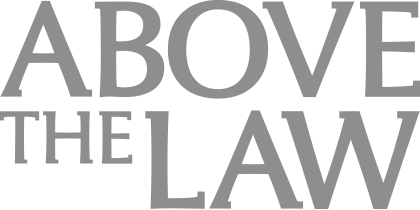A Fashionable Fracas: Adidas Wages War Over Use Of 3-Stripe Trademark
It will be up to the jury and Judge Jed S. Rakoff, one of the Southern District’s most well-known jurists, to make the final call.

(Photo by Christian Vierig/Getty Images)
Emerging from the most court-adjacent subway station into the morning drear of New York City in January, I approached the Daniel Patrick Moynihan Courthouse while glancing about for noticeably de rigueur outfits. While the sartorial stylings of the lawyers that usually haunt the local courts are not necessarily lacking, they can leave something to be desired. Today, though, was likely to be different because an extremely fashionable event was transpiring in of the federal building’s courtrooms. The event in question, adidas America, Inc. v. Thom Browne, Inc., was unquestionably the fashion law event of the admittedly young season, and there was a certain almost palpable buzz about the courthouse.
This could have been due to the star wattage of Thom Browne himself, who strode into courtroom wearing one of his trademark gray suits — with shorts — and up-to-the-knee socks that bore four of the very stripes at issue in the case. He was accompanied by a cohort of similarly attired colleagues, though his counsel conspicuously adopted more traditional and lawyerly suiting.

AI Presents Both Opportunities And Risks For Lawyers. Are You Prepared?
Clacking along on the subway en route to the trial, I had realized, with abject horror, that I was actually wearing one of Thom Browne’s signature three-piece suits. My pants were long, though not as long as is standard, and unbelted, both of which are signatures of Thom’s. I had donned this apparel without clocking the designer and had in doing so committed a real blunder, akin to wearing to a band’s concert the band’s most recent T-shirt. Such a move is seen as pandering, totally uncool. I did my best to conceal my garb with an umbrella as I entered the courtroom to witness the proceedings.
Said proceedings comprised a trademark infringement trial, addressing one in a long line of claims that Adidas has made against those who deign to use stripes on their apparel. Adidas, which produces athletic gear, sued Thom Browne, a producer of luxury apparel, alleging that the latter was using stripes in a way that caused confusion with Adidas’s famous “three parallel stripes” trademark, which has long been registered. Adidas asserted, among other things, that Thom Browne used certain striped motifs on activewear like sweatpants, hoodies, and T-shirts in a manner that infringed Adidas’s rights in the mark.
Thom Browne had been using parallel stripes for many years, including in one of his most important designs, which he calls the “Grosgrain Signature.” In 2005, the company began using a three-line design more similar to the Adidas mark, placing it, among other places, on athletic wear like sweatshirts. In 2007, Adidas’s trademark watchdog caught wind of the use and and reached out to express concern. Thom Browne, likely seeking to avoid ending up in court proceedings such as the trial at hand, acquiesced and added a fourth line to its garments in 2008. As Thom Browne’s offerings, like most luxury purveyors in the market, began lurching further into the realm of, shudder, athletic leisure wear, Adidas again contacted the company with concerns. The parties attempted to mediate but that didn’t work so they ended up in court and, as of this month, in trial.
To win, Adidas must prove to the jury that Thom Browne’s use of its trademark sowed confusion in the marketplace among relevant consumers and damaged Adidas. Thom Browne has pushed back against such assertions and offered affirmative defense, most which sound in delay — acquiescence, estoppel, abandonment, and laches. In other words, Thom Browne argues, Adidas knew it was using the marks at issue a long time ago and is only now suing because Thom Browne has become hugely successful, and Adidas wants to eliminate a competitor. The court disposed of all of these affirmative defenses at the summary judgment stage, aside from laches.
Sponsored

Law Firm Business Development Is More Than Relationship Building

Curbing Client And Talent Loss With Productivity Tech

AI Presents Both Opportunities And Risks For Lawyers. Are You Prepared?
So, if Adidas is able to prove trademark infringement, which is still up in the air, Thom Browne will be tasked with proving to the jury, which has been watching the proceedings with rapt attention for the most part, that 1) Adidas knew of Thom Browne’s use of the mark; 2) Adidas inexcusably delayed in taking action; and (3) Thom Browne was prejudiced by the delay. Even if Adidas is able to prove trademark infringement, Browne will still prevail should this be the case. There seems to be support for each of these factors — Adidas knew of Thom Browne’s use for years but failed to take action, and Thom Browne was prejudiced because it built a massive following using the mark as a key component of his branding.
But it will be up to the jury and Judge Jed S. Rakoff, one of the Southern District’s most well-known jurists, to make the final call. Rakoff has thus far presided over the proceedings in a firm but calming manner, reflective of his decades of experience on the bench. He instructed an Adidas expert witness as to why it was acceptable for Thom Browne’s counsel to cut him off mid-sentence (the witness had failed to answer the question asked) and advised an objecting attorney that while his objection was to be overruled, if it had been made on alternate grounds, it may have fared better. This latter point was made in an almost professorial manner, not surprising considering that Rakoff has long taught law at Columbia Law School.
Rakoff is known for moving his cases along at a rapid clip, and the trial has seemed to progress quickly and efficiently, without the unfortunately common delays and bogs that usually annoy jurors and impede forward progress. As expert testimony gave way to party testimony, it became clear that the case, and to a degree the future of stripe use on garments, would soon be in the jury’s hands.
 Scott Alan Burroughs, Esq. practices with Doniger / Burroughs, an art law firm based in Venice, California. He represents artists and content creators of all stripes and writes and speaks regularly on copyright issues. He can be reached at [email protected], and you can follow his law firm on Instagram: @veniceartlaw.
Scott Alan Burroughs, Esq. practices with Doniger / Burroughs, an art law firm based in Venice, California. He represents artists and content creators of all stripes and writes and speaks regularly on copyright issues. He can be reached at [email protected], and you can follow his law firm on Instagram: @veniceartlaw.
Sponsored









